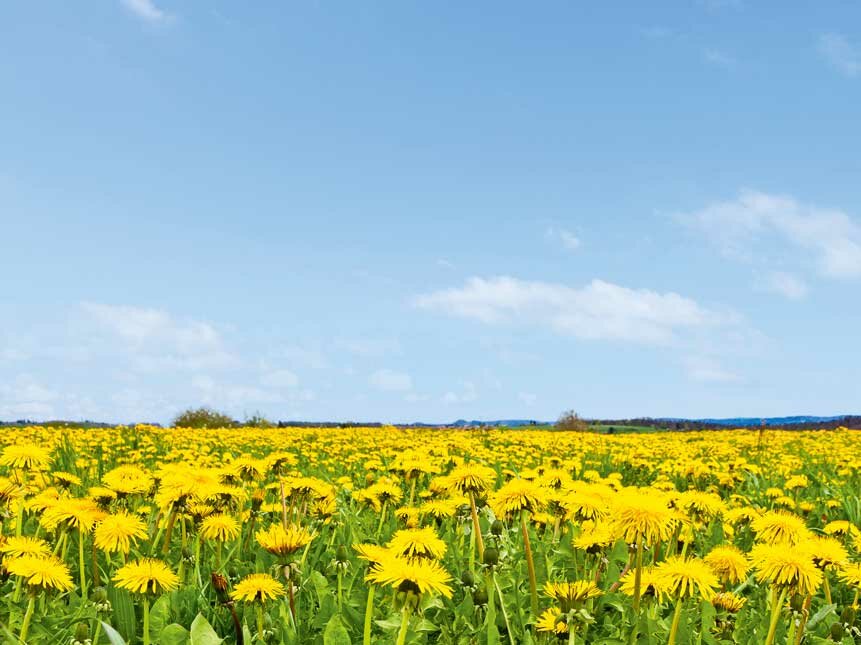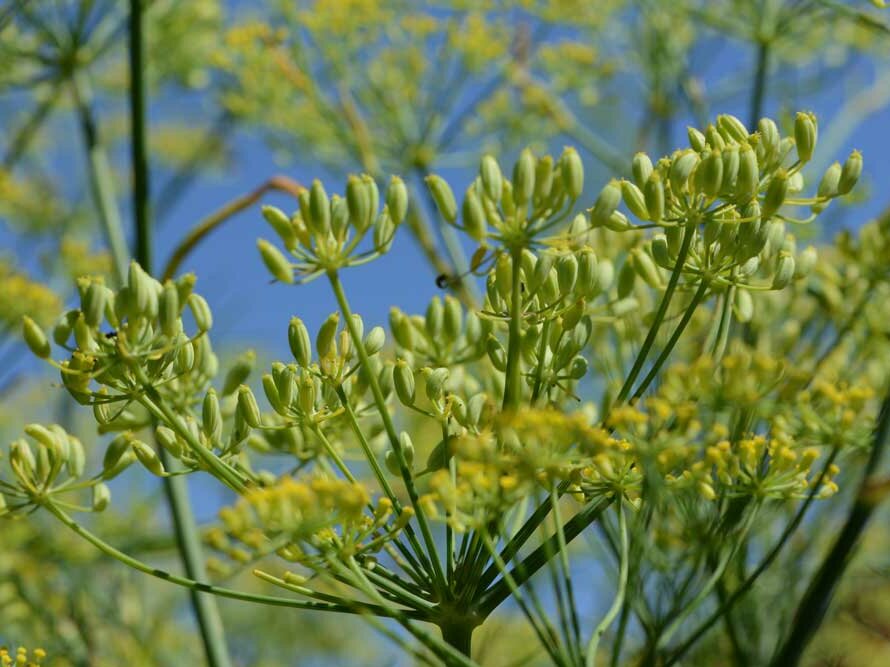Cultivating herbs - Crops that few people know about
By Dr Christian Bickert, DLG Mitteilungen
Fennel, aniseed, caraway or marjoram - these crops are occasionally found in the fields. But angelica, valerian or echinacea have to be looked for, as well as artichoke or goldenrod. Or have you ever "stumbled" across a field with pure dandelion? These are true niches, but for some farms they are the central branch of the business. This requires not only crop production skills, but also the courage to take risks and staying power.
An accurate seedbed and stringent weed control are crucial. Especially plants with poisonous alkaloids such as nightshade, datura or ragwort must be 100% removed at harvest. This requires a lot of manual labour and clean field sections in the crop rotation from the very beginning.
It is more difficult with perennial plants such as fennel or aniseed, which are subject to a high risk of wintering out. On the other hand, the second year often brings good yields with little effort. In favourable cases, even three harvest years are possible.
The challenge is the market
Because sales are extremely volatile and you have to have a partner who guarantees sales. The sales - not the price and not the payment deadline. Because depending on the year, the drug or the oil is virtually snatched out of the hands of the producer organisations or marketers, or the goods are stored like lead in the warehouse for several months or even years. Then it also takes time to get paid. So it is not an exchangeable customer-supplier relationship, but more a cooperation based on trust. For the marketers, it's about supply capability. They have to buffer harvest fluctuations, which requires enormous pre-financing - usually this is then also passed on to the growers.
The centres of cultivation of herbs in Germany
In Germany, most herbs are grown in Franconia, Thuringia, southern Hesse and Saxony-Anhalt. In total, in 2020 (more recent figures from the Federal Statistical Office are not available), medicinal and aromatic plants were grown on 8300 ha, 1740 ha of which on organic farms. After all, 1140 farms cultivate these plants, a good third of which are organic farms. While in Saxony-Anhalt and Thuringia mainly marjoram (350 ha in Saxony-Anhalt alone), thyme and other kitchen herbs are grown in the fields, in warmer southern Germany medicinal plants for the pharmaceutical industry such as ribwort, goldenrod or foxglove are also found more frequently.
Large buyers or processing companies are Kräuter-Mix in Abtswind, Bauer in Vestenbergsgreuth (both Franconia), Agrimed in Groß-Gerau, Majoranwerk Aschersleben or Cochstedter Gewürzpflanzen e. G. near Aschersleben.
Who are the customers?
Potential buyers can be roughly divided into three categories:
- Food products represent the largest sub-market. The technical requirements range from oil extraction to leaf sizes for teas or aromatic herbs as well as blends. This can be done by the marketers themselves. In addition to classic cleaning systems, colour separators are also used. Important customers are the meat and baking industries or the corresponding trades. But there are also the catering trade and the drugstore and retail trade (especially teas).
- It is no different with pet food, where VitaKraft & Co. set their purity requirements somewhat lower than in the food or cosmetics industry. Nevertheless, the quality has to be right, if only because the products have to be the same year in and year out. There, for example, nettle stalks, peppermint or dandelion leaves are needed for rabbit feed. But spices also find their way into preserved pet food. There is also an organic line in both market segments.
- The production of leaf and root drugs for the pharmaceutical and cosmetics industry is much more complex. Here, the focus for the processors is on purification; the pharmaceutical extraction of the active ingredients is done by companies that specialise in such extractions. It usually takes a long time before a marketer is accepted as a supplier by the pharmaceutical industry. However, once you are on their list, it is a sure sale. This is because pharmaceutical and cosmetics manufacturers want to know their suppliers and will only change if there is no other way. The price is less important than with pet food, which allows good margins - once you are listed.
A growing market
In any case, it is about close supply relationships that do not tolerate a supply failure well. In general, the willingness of pharmaceutical manufacturers in particular to buy in Germany and the EU is increasing - so the market is growing. This is not only due to the global problems with supply chains and conflicts, but also to the new supply chain law, which, among other things, sanctions child labour and demands labour standards. Many pharmaceutical raw materials come from wild collections in third countries, where compliance with the requirements cannot be proven with certainty.
Conclusion
New growers are in demand, but not everyone with an acre to spare is suitable. In addition to a willingness to experiment and perseverance, the farm also needs a good financial basis to cope with failures. However, once the cultivation is established, the profits over the years are significantly higher than with wheat or rape.
Dr Matthes: "Three requirements for the cultivation of medicinal and aromatic herbs"
First, the courage to start a new crop with 10 ha. Because just trying it out on half a hectare is not going to work. It causes big problems and is very prone to errors. If you want to enter this market, you have to get involved in completely different production conditions, such as a lot of manual work before the harvest to remove problem weeds.
Secondly, farmers have to be willing to commit themselves to a contract. There is not a good market every year, and prices cannot always be determined in advance. A farm manager has to be able and willing to tolerate that. This has nothing to do with the size of the farm, but starts in the mind.
And thirdly, the farm must be able to cope with long pre-financing periods. The market fluctuations in medicinal and aromatic herbs cannot all be reflected in cash flows. The farms must be prepared to help out at this point by offering often very long payment terms. On the other hand, good revenues beckon over the time axis. In the end, it is more cooperation with buyers than with customer/supplier relationships, such as in the cultivation of cereals.





